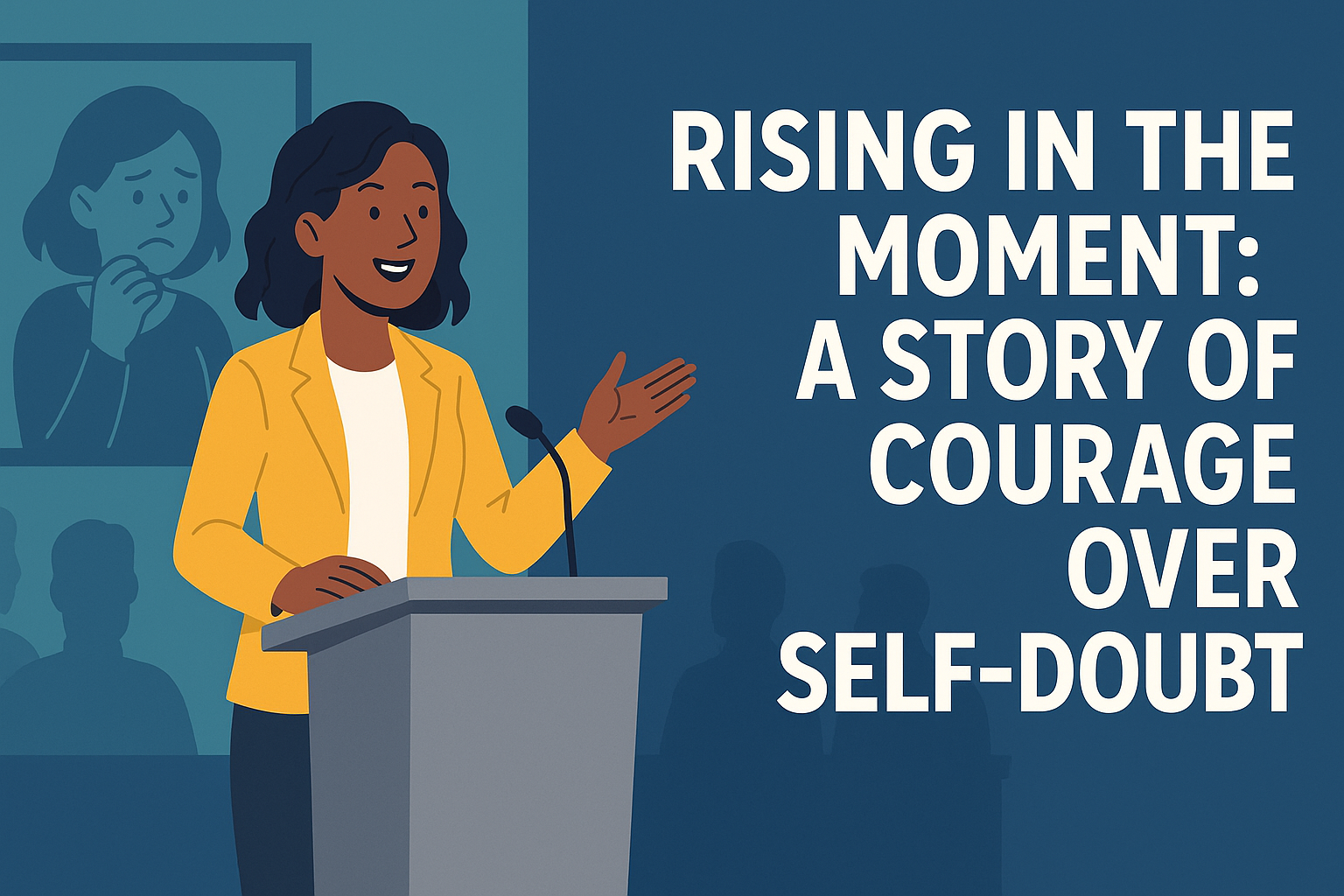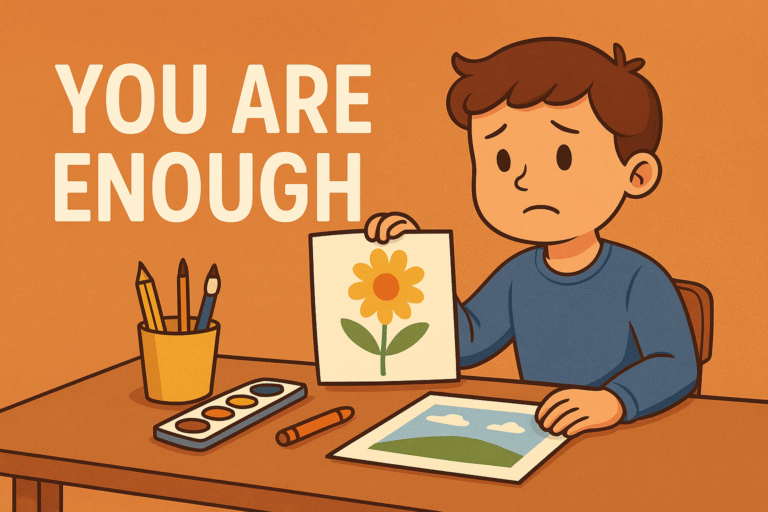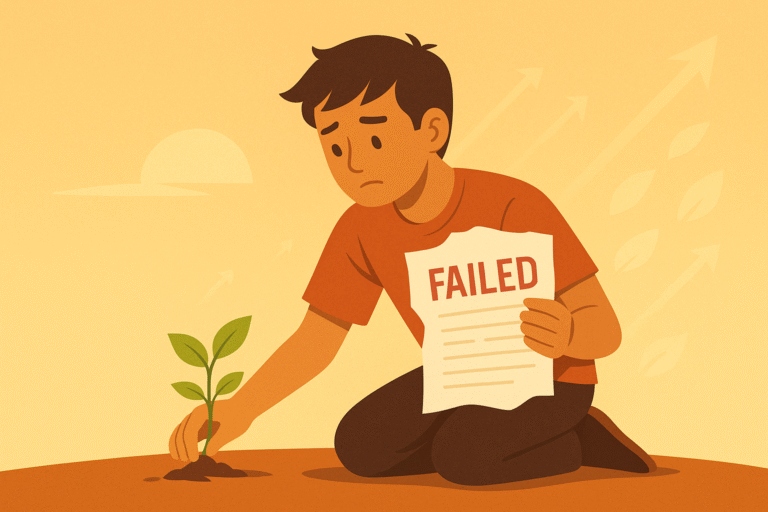When Doubt Strikes: How One Person Found Courage in a Crucial Moment
About Me
Hello, my friend! Thank you for choosing the Read and Reflect.
Introduction
Have you ever felt your confidence vanish just when you needed it most? That sinking feeling—“I’m not ready, I can’t do this”—is self‑doubt, and it can freeze us in place. Yet sometimes, in the heat of a crisis, we dig deeper and surprise ourselves. In this post, you’ll read the story of Maya, an introverted project coordinator who stepped up in a critical moment despite her fear. Then, discover 5 practical steps to harness that same courage in your own life.
The Story: Maya’s Moment of Truth
Maya is a bright girl who has just graduated and started her career in the IT industry. After joining the company, she found that she couldn’t perform with the same boldness she once had in school and college. Like many newcomers, she carried a lot of self-doubt. Even though her ideas were smart and she learned quickly, she often questioned herself: “Am I good enough? What if I fail?”
After six months, the biggest test of her career arrived. On the day of an important client presentation, her manager suddenly fell ill. As the meeting began, the room filled with senior executives and even the client’s CEO, all waiting for the demonstration to start.
Maya’s mind was hijacked by self-doubt. She had helped prepare the slides but had never spoken in front of such a large audience. Her thoughts spun: “They’ll see I’m just a fresher. They’ll know I’m not the expert.”
For a moment, she wanted to escape the room. This is how most of us think when facing a problem—if we pause and think, we may have a chance of finding the solution. But instead, she paused, took a deep breath, and told herself softly:
“You know this. Speak from preparation, not perfection.”
With that thought, Maya took a deep breath and walked to the podium. She imagined it was just like giving a seminar back in her college days. This time, she explained every concept to the client even better than she had during those seminars. To her surprise, her voice stayed steady. She answered the difficult questions honestly, and when a technical problem came up, she calmly showed the client the prototype instead. Whenever fear returned, she reminded herself of the practice she had done with her manager the day before.
When she finished, there was a brief silence. Then the room filled with applause. The client signed the project plan and praised her confidence and clarity.
Back at her desk, Maya finally let out a deep breath. That day, she discovered an important truth:
Courage is not the absence of self-doubt—it is choosing to act despite it.
5 Steps to Act with Courage in the Face of Doubt
1. Acknowledge Your Doubt
Action: Write down what you fear—public speaking, failure, judgment. Why: Naming doubt separates you from it and tames its power.
2. Recall Your Preparation
Action: List 3 things you have mastered related to the challenge: training, practice sessions, mentorship.
Why: Evidence of competence builds a foundation under your feet.
3. Use a Grounding Mantra
Action: Choose a short phrase—“I’m ready,” “Breathe and begin,” or Maya’s “Speak from preparation, not perfection”—and repeat it silently when anxiety spikes.
Why: A mantra interrupts negative thoughts and centres your focus.
4. Break the Task into a First Step
Action: Define the very first action: stand up, open the slide deck, and say your name.
Why: Starting small defeats the overwhelm of the big picture.
5. Reflect and Reinforce
Action: After the moment passes, jot down what went well and one takeaway for next time.
Why: Reflection turns a single act of courage into lasting confidence.
Mini Worksheet
Situation that triggers doubt:
My specific fear:
Preparation I’ve done:
1.
2.
3.
My grounding mantra:
First step I’ll take:
Post‑action note:
Use this before challenging moments to anchor your courage.
FAQs
Q: What if my heart still races?
A: A racing heart is normal—focus on your mantra and begin your first step; nerves often fade once you start.
Q: Can I apply this outside work?
A: Absolutely. These steps work for any situation: asking for help, giving feedback, or even personal challenges.
Q: What if I fail?
A: Every attempt is a step forward. Failure offers lessons—reflect on what you learned, then try again.
Q: How often should I practice?
A: Review and rehearse these steps weekly. The more you prepare, the less room doubt has to grow.
Explore More Lessons
- Can’t Sit Still? Try These Moving Mindfulness Tricks
- When Plan A Falls Through: How to Pick a Strong Backup Career
- Mindful Scrolling: 3 Simple Rules to Curb Social Media Anxiety
Final Thought
Self‑doubt is a universal experience, but it doesn’t have to define your actions. By acknowledging fear, leaning on preparation, and taking one small step, you create a momentum of courage. Remember Maya’s story: action, not absence of doubt, is true bravery. Next time you face a critical moment, use these steps to ignite your own moment of truth.
Which step will you try next? Share below to inspire someone else’s courage.
Discover more from ReadAndReflect
Subscribe to get the latest posts sent to your email.








